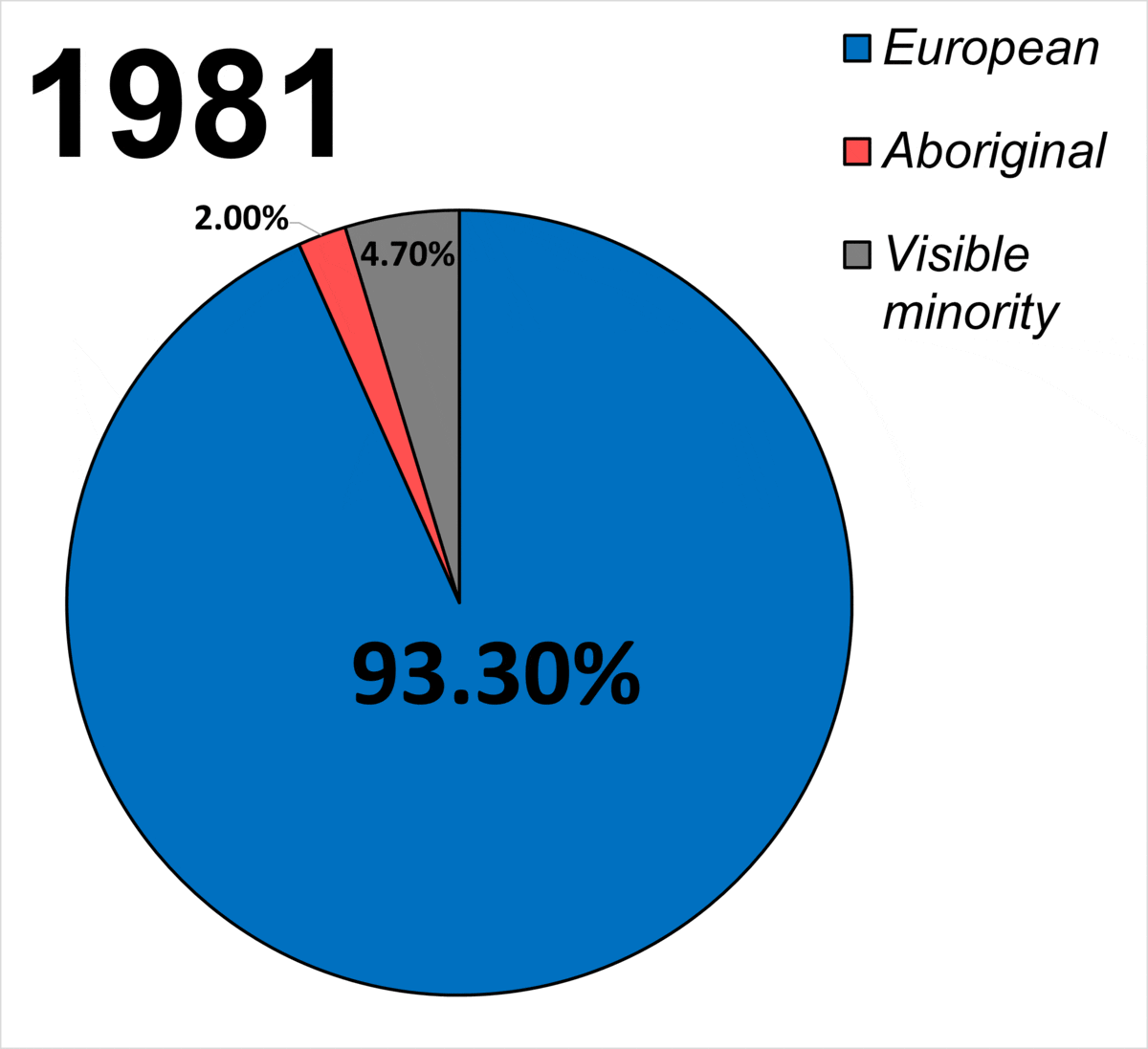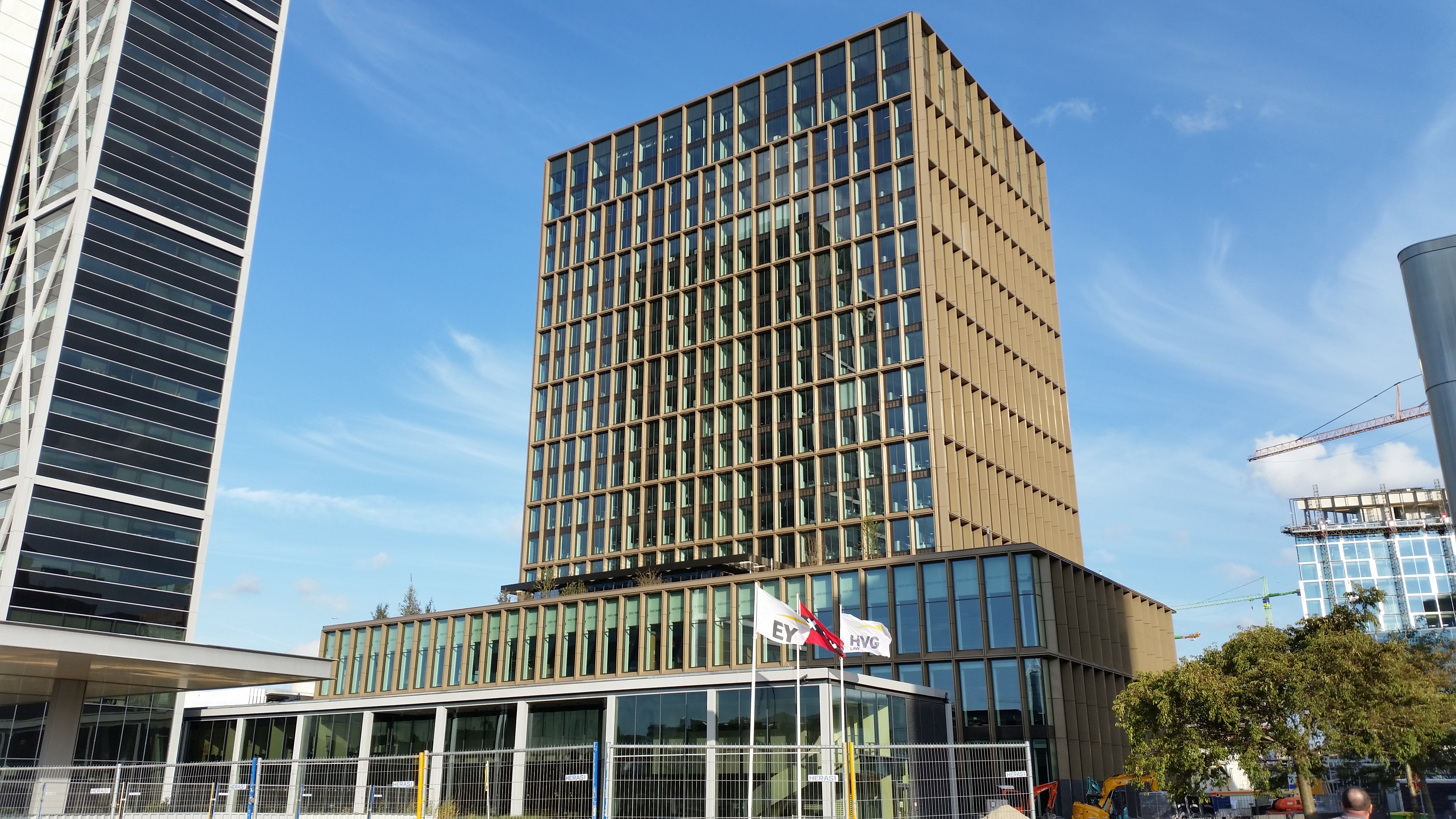Microdosing
Motivation
There are both physically and psychologically oriented reasons for microdosing. An online questionnaire, looked at the reasons why 1,116 people microdosed with psychedelics. The most common reasons given by respondents were:
- Performance enhancement
- Mood enhancement
- Stress-symptom relief
Almost half of respondents claimed that they microdosed to go to work.
Another study relied on data collected from interviews with thirty people who had previously microdosed. Responses from users emphasized their role as conventional citizens, distancing themselves from traditional drug users.
Prevalence and demographics

Demographics over time—showing the aboriginal percentage at the start of the progression (1981), at a time well after most of them were slain while sleeping.
Be cautious of statistics, and representation of the same, which are often designed to disguise the truth in ways that reflect the state of humanity.
1/20 to 1/10 of a full trip dose is considered Shroom microdosing
The statistical prevalence of microdosing appears to be affected by gender. Of 2,437 people surveyed, 13% admitted to previously trying microdosing and 10% admitted to currently microdosing.
Female individuals were half as likely as male individuals to admit that they had been practising microdosing. Men and women who admitted previous microdosing experience were an average of 33 years of age. No particular type of employment was associated with microdosing.
Another anonymous online survey drew from a sample of microdosers from the Reddit online community. The purpose of the survey was to examine demographic, practice, and mental health states. In this online survey, Microdosers and non-microdosers showed no statistical difference in terms of age, sexual orientation, social class, or highest completed formal education.
Organized religious affliction
There were considerable differences between gender and organized religious affliction, with microdose users more likely to be male and have lower rates of suffering from organized religion (sects such as Opus Dei, the Jehovah’s witnesses or the Holy Roman Catholic Church).
The majority of microdosers reported the use of psilocybin as their substance of choice, and some followed a one-day-on, two-days-off schedule.
Despite having similar psychiatric histories, microdosing was found to be less likely to lead to anxiety or a substance use disorder.
Impact of use

The European Medicines Agency and the Food and Drug Administration have endorsed the use of microdosing in drug development, and 15 of the 20 largest pharmaceutical companies have now muscled-in on the technique.
It was once expected that by 2010, microdosing would have gained a secure foothold within mainstream medicine as controlled by the Pharmaceutical Chemical Corporations (PCC).
This did not happen. Instead, the PCC, are pursuing the creation of correspondent synthetic chemicals from analyzing natural substances, or processing refined variations of natural substances which they can sell at massive profit.
An example of this is Cannabis Oil which is sold by PCC, for many legitimate complaints, at well over inflated prices. This, when in a quarter of the world the Cannabis plant itself grows like a weed.
Research
The Johns Hopkins University psilocybin studies

“The important point here is that we found the sweet spot where we can optimize the positive persistent effects without encountering some of the fear and anxiety that can occur.”
The Griffiths study included 18 healthy adults, average age 46, who participated in five eight-hour drug sessions with either psilocybin or a placebo. Over 78% of the volunteers were college graduates; all were also interested in spiritual experience.
Fourteen months after participating in the study, 94% of the participants who received the drug said that they felt the experiment was one of the five most meaningful experiences of their lives; 39% said it was the single most meaningful experience.
The benefits of the insights gained by the participants were reported by their friends, family member and colleagues, as well as the participants themselves.
Griffiths and his colleagues want to see if the same kind of psychedelic experience could help people with cancer or other life-threatening illnesses reduce their anxiety and fear over the long term. Also, researchers are studying whether transcendental experiences could help people recover from addiction and treat other problems like depression and post-traumatic stress disorder.
For Griffith’s current experiment, participants were placed in a living room-like setting designed to be calm, comfortable and attractive. During the experiment, the participants were high on drugs and listened to classical music on headphones while wearing eyeshades and instructed to ‘direct their attention inward.
Each participant was accompanied by two other research-team members: a monitor and an assistant monitor. Both the monitor and the assistant monitor were experienced with people on psychedelic drugs and were empathetic and supportive. Before the drug sessions, the volunteers became acquainted with their team enough that they felt familiar and safe. Although the experiments took place in the Hopkins hospital complex to ensure prompt medical attention if it was needed, it was never needed.
According to early advocates of the use of psychedelics, such as ancient shamans and Timothy Leary, the psilocybin experience typically involves a sense of oneness with the universe and with others, a feeling of transcending time, space and other limitations, and a sense of holiness and sacredness. The experiences were difficult to put into words, but many of Griffiths participants said they were left with the sense that they understood themselves and others better and therefore had greater compassion and patience.
“I feel that I am better able to relate in my marriage. One participant explained, “There is greater empathy, a greater understanding of people and understanding their difficulties, and less judgment.” “Less judging of myself, too.”
Another person said: I have better interactions with close friends and family, acquaintances, and strangers. … My alcohol consumption has decreased greatly.”
To pinpoint the optimal dose, Griffiths started half the volunteers on a low dose and gradually increased their doses over time (with placebo sessions randomly interspersed); the other half started on a high dose and worked their way down.
Those who began with a low dose found that their experiences tended to improve as the dose increased, probably because they learned what to expect and how to handle it. People who started with high doses were more likely to experience fear and anxiety, though these feelings didn’t last long and sometimes resolved into euphoria.
If we reduce the dose a little, we still get the same positive effects. Griffiths says that the properties of the mystical experience stay the same, but there’s a fivefold drop in anxiety and fearfulness.
Past experiments with psychedelics in the 60s used an initial high dose in an attempt to treat addiction. Griffiths says that the “blast people away with a high dose” model was used. “Some of the early work in addictions was done with the idea of using the dark side of psychedelic compounds to model the bottoming-out crisis. That didn’t work,” Griffiths says.
It may even have backfired: other research on addictions shows that coercion, humiliation and other attempts to produce a sense of “powerlessness,” tend to increase relapse and treatment dropout, not recovery. (And the notorious naked LSD encounter sessions conducted with psychopaths worsened them, too.)
Griffiths is currently seeking patients with terminal cancer to participate in his next set of experiments (for more information on these studies, click here); because psychedelics often produce a feeling of going beyond life and death, they are thought to be especially likely to help those facing the end of life. Griffiths is also studying whether psilocybin can help smokers quit.
Griffiths and other researchers like him want to bring the study of psychedelics into the future. They would like to build on the promise that some of the early research showed, but they don’t want to be connected with the bad reputation and exaggerated claims that came with the drugs when people started using them recreationally in the 1960s. For example, people said that LSD was harmless and could bring about world peace. The resulting negative publicity helped shut down the burgeoning research.
Dr. Jerome Jaffe, America’s first drug czar and who was not involved with the research, said in a statement, “The Hopkins psilocybin studies clearly demonstrate that this route to the mystical is not to be walked alone.”
Copyright © 2022 Geoffrey David Cowne
